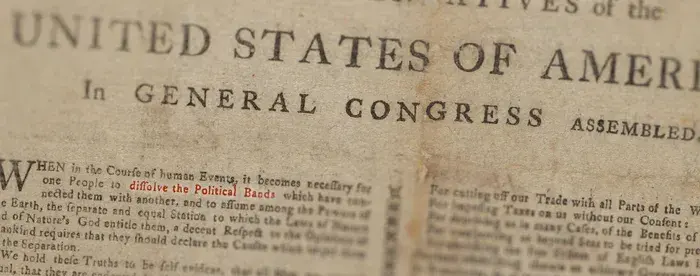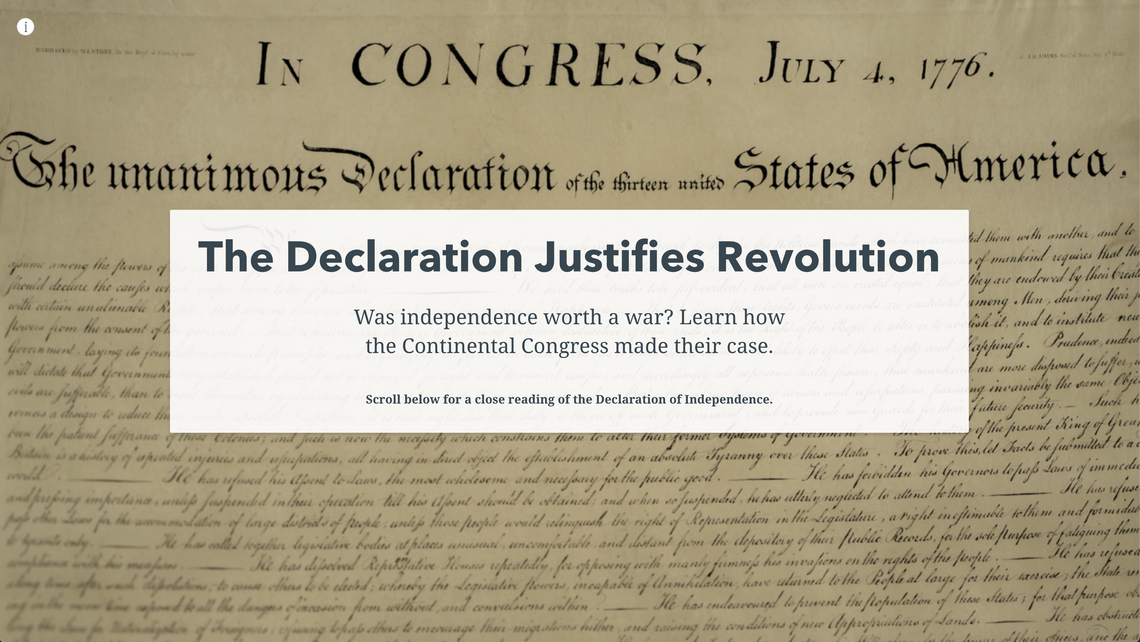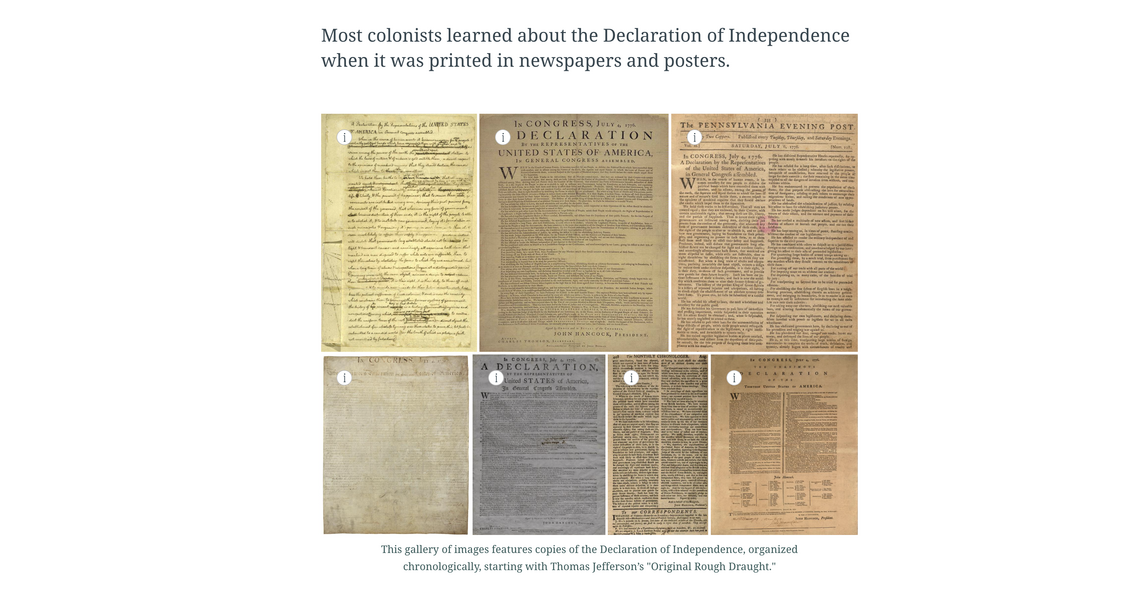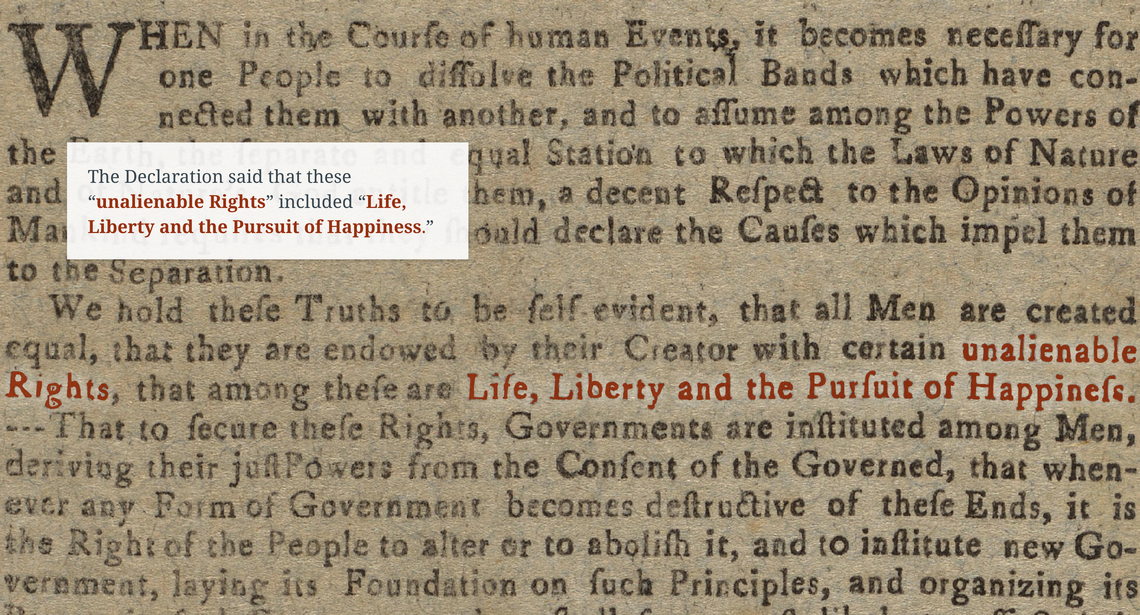The Declaration Justifies Revolution
This guide offers ideas on how to bring this interactive exhibition into your classroom. It provides recommendations on the best setup and pacing as well as discussion questions and activities for each of the exhibition’s four sections. By the end of this activity, your students will understand how the Continental Congress made its case that independence was worth a war.









